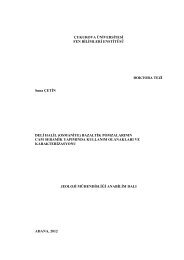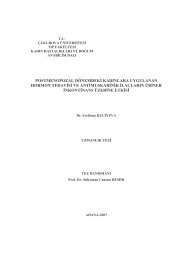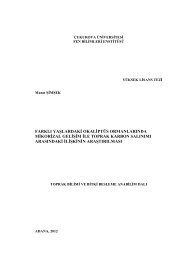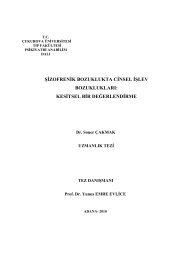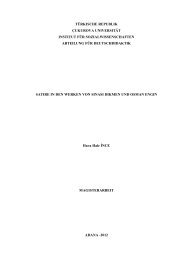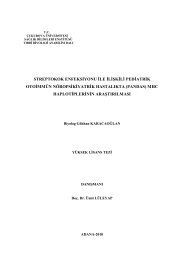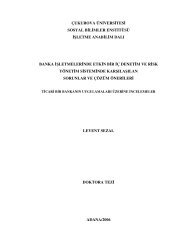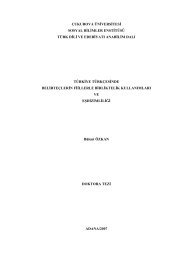ÇUKUROVA UNIVERSITY INSTITUTE OF NATURAL AND APPLIED ...
ÇUKUROVA UNIVERSITY INSTITUTE OF NATURAL AND APPLIED ...
ÇUKUROVA UNIVERSITY INSTITUTE OF NATURAL AND APPLIED ...
You also want an ePaper? Increase the reach of your titles
YUMPU automatically turns print PDFs into web optimized ePapers that Google loves.
4. MODELING <strong>OF</strong> PROPOSED DVR Mustafa İNCİ<br />
Among the different topologies of multilevel converters, the most popular<br />
are: diode clamped inverters, flying-capacitor inverters, and cascade H-bridge<br />
inverters(Patil et al., 2012). An m-level diode-clamped multilevel inverter typically<br />
consists of m-1 capacitors on the dc bus and produces m levels of the phase<br />
voltage(Ozdemir et al., 2007). Figure 4.3 presents a single-phase diode-clamped<br />
inverter with two three-level legs. In this case, the dc-link is composed of two<br />
capacitors. For proper modulation and to avoid excessive voltage on switches, the<br />
voltage on the dc-link capacitors should be the same(Stala,2011).<br />
V<br />
p<br />
= V N<br />
(4.1)<br />
Proposed topology consists of two capacitors on dc bus and generates fivevoltage<br />
levels of phase voltage in inverter. Inverter structure consists of three single<br />
phase five level diode clamped inverter for each phases. In this wise, it can<br />
compensate balanced and unbalanced voltage sag/swell. Also, each diode clamped<br />
inverter generates five voltage level (-Vdc, -0.5Vdc, 0, 0.5Vdc,Vdc). The voltage<br />
levels and their corresponding switch states of inverter for each five level diode<br />
clamped inverter are shown in Table 4.2. State condition 1 means the switch is ON,<br />
and state 0 means the switch is off.<br />
48



